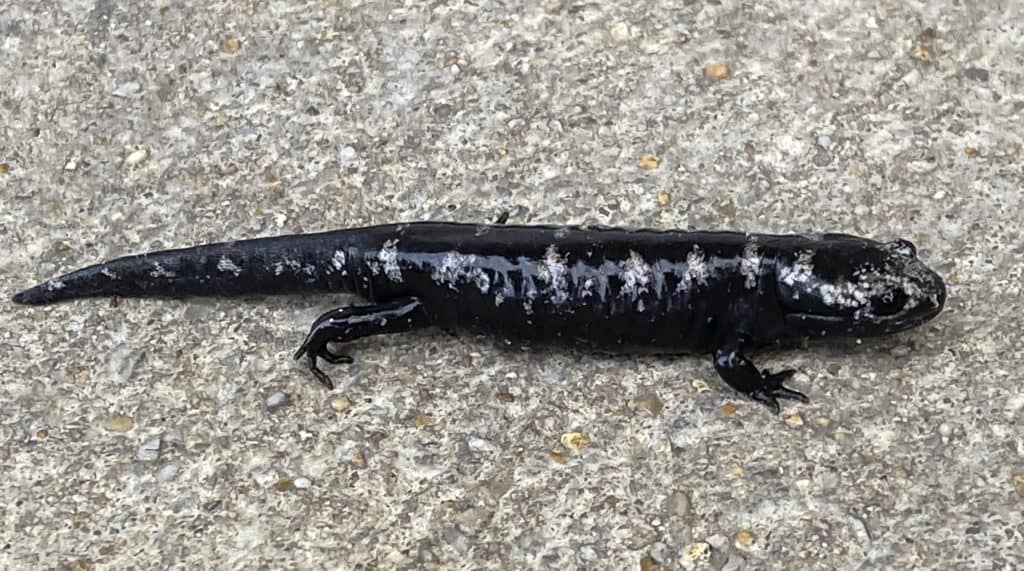Creature Feature

Protecting Fragile Salamanders
By Wayne Bierbaum
Recently after an overnight rain and cool overnight temperatures, I found a cold and slow salamander trying to escape the dryness of a sidewalk in Shady Side. I took a photo with my cellphone and then scooped it up in a large leaf and moved it to the leaf litter under a birch tree. The salamander was black with light gray patches and nearly three inches long. It slowly disappeared under the leaves.
While on walks in the woods, I have a habit of turning over a log or two. I have rarely found a salamander and never one three inches long. This salamander was a type of mole salamander, a marbled salamander. The mole salamander group all primarily live underground in tunnels and are quite secretive. The marbled salamanders are reported to be quite common but rarely seen. They eat bugs, slugs, snails, and worms.
In the spring, marbled salamanders migrate to vernal ponds to procreate. Vernal ponds hold water only in the spring and dry out over the summer. This is important because the ponds are void of fish which would eat the salamander eggs. The female salamanders will lay between 30 to 200 eggs. The newly hatched larva hide during the day and feed on zooplankton at night. Eventually, before the pool dries up, they develop into their adult form and move into the forest. Jug Bay Wetlands Sanctuary in Lothian does annual studies on vernal pools and offers at least one trip to visitors.
Marbled salamanders are not very territorial and several can be found living within the same area. Studies have shown that they can recognize their siblings and avoid inbreeding.
Salamanders on the whole are a fragile species. They have wet skin that cannot tolerate getting dry. The skin also will absorb toxins like oil, insecticides, repellents, etc. For that reason, they should not be held in your hands and will not survive in a typical suburban landscape where chemicals are used on lawns and gardens. Land development also affects their populations.
Try to leave one spot in your yard wild with no chemical use, native plants, and use fallen leaves for mulch. Small things like these will help protect native animal species. To learn more, I suggest contacting The Virginia Herpetological Society for detailed information on local salamanders.
